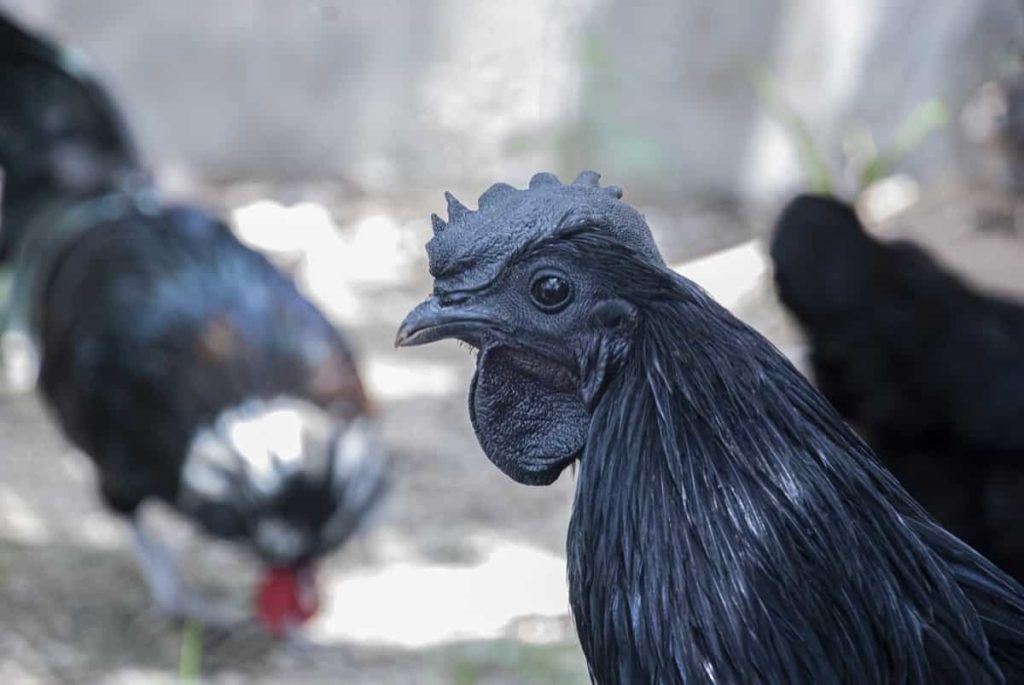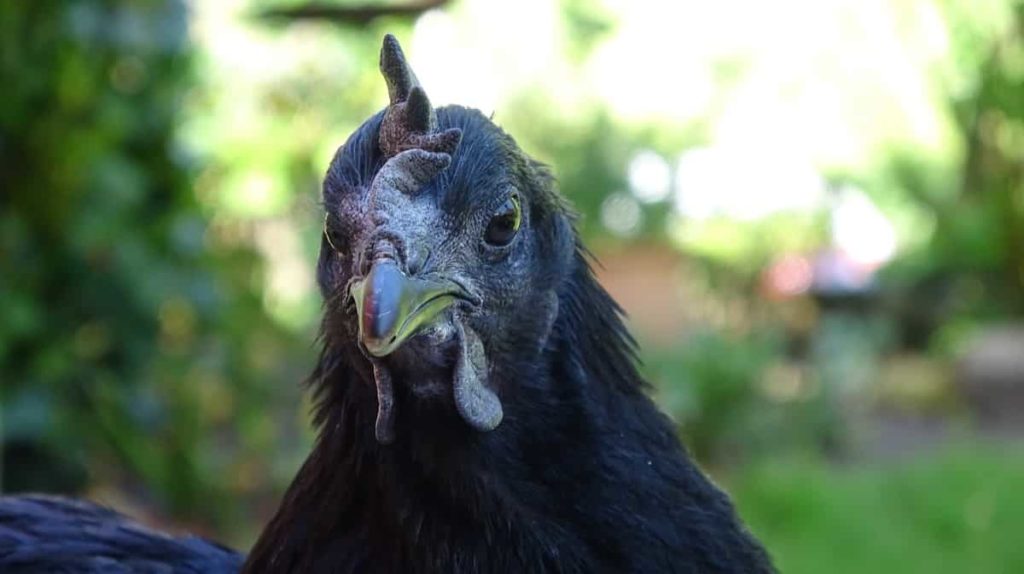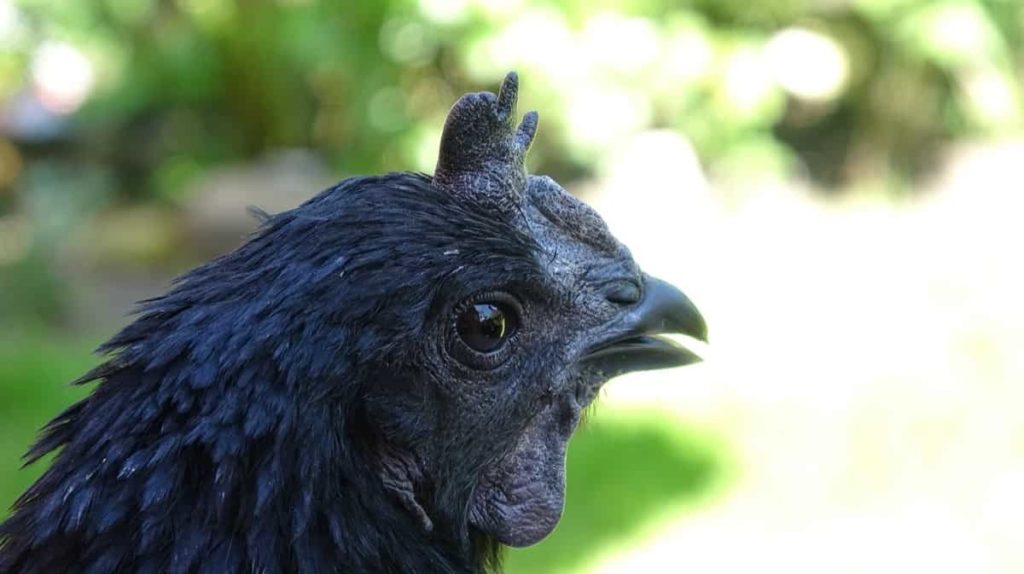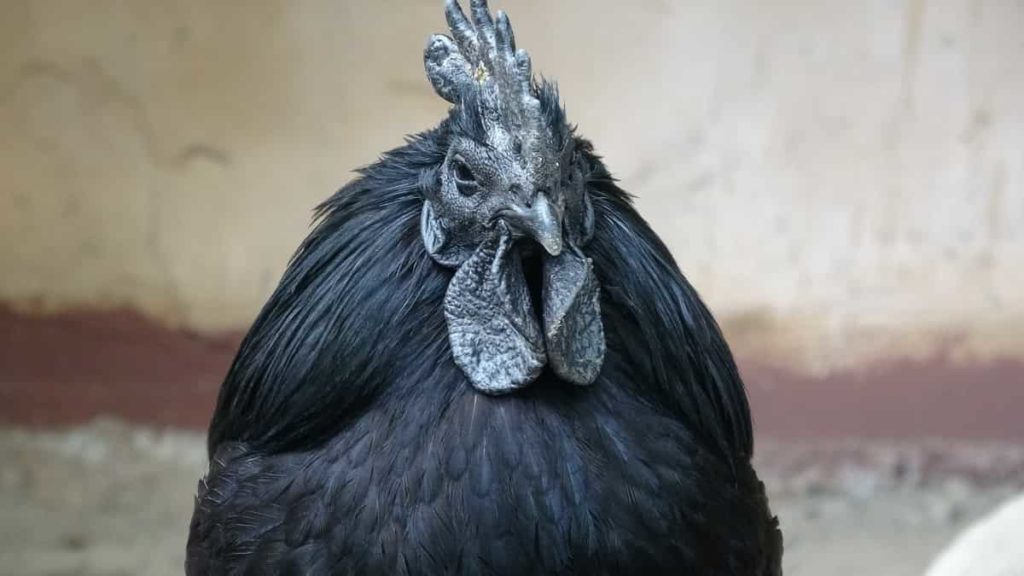What is “Kadaknath chicken” and what are its benefits?
There are 19 native chicken breeds in India, with the kadaknath being one among them. It is native to Madhya Pradesh, where it has been raised for centuries by the Bhil and Bhilala tribes. The chicken’s meat and internal organs are black in hue, which is the breed’s peculiarity. As a result, it’s also known as Black Meat Chicken (BMC). It’s also worth noting that it’s India’s only black meat chicken breed. Let’s check out more information on earning more than 3 lakh per month from Kadaknath farm.

Even though the flesh is black, the kadaknath breed has three different colored feathers: jet black, golden, and penciled. Because Kadaknath is a sturdy breed, it can adapt to any climatic situation and has a substantial disease resistance. Meat quality is prized for its particular flavor, texture, and texture. This breed’s flesh is black in hue and is said to have therapeutic benefits. As a result, it is particularly popular among Adivasis. These birds are used as a religious offering to God.
Protein is abundant in Kadaknath. Other chicken breeds have 18 to 20% protein, whereas kadaknath has 25% more. According to studies, kadaknath has a reduced cholesterol content of 0.73 to 1.37 percent, whereas broiler chicken has a 13 to 25% cholesterol content. Amino acids abound in Kadaknath. Niacin, protein, fat, calcium, phosphorus, iron, nicotinic acids, and other minerals can be found in kadaknath.
B1, B2, B6, B12, C, and E are the vitamins found in his breed. Eggs are beneficial for aging and developing children since they are high in amino acids and low in cholesterol. In addition, Kadaknath eggs can aid with migraines, postpartum headaches, acute or chronic kidney inflammation (nephritis), asthma, and other ailments. It tastes better and is more healthful than country chicken.
Earning more than 3 lakh per month from Kadaknath farm
The success story of Mr. Ravi
Mr. Ravi from Kukatpally, Hyderabad, Telangana, is a software engineer. Tired of working non-stop from morning till evening for company, he wanted to do something for himself. He wanted to own a successful venture. After thorough thinking, he decided to enter agriculture. So he bought 10 acres of land near Vikarabad, Telangana, and along with agriculture, he started kadaknath chicken rearing in one acre. He started this after making a proper analysis. Despite this, he also faced some bad issues because of his lack of experience. At present, his kadaknath farm expanded to 6000 chickens from 500 chickens.
In case you miss this: Kadaknath Egg Production, Egg Price, Health Benefits

Earning 3.5 lakh per month from Kadaknath farm
Shed construction of Mr. Ravi’s farm
He constructed a suitable shed for 8000 chickens to protect his chickens from extreme climates. He then divided this shed into three parts, the first one for brooding baby chickens, the second for rearing the adult chickens, and the last one for the chickens that lay eggs. Unfortunately, this division is helping him increase mortality.
This shed has a water tank attached to the roof. From this, the water is supplied to chickens for rearing purposes. He installed a nipper system in his shed for providing water to his kadaknath chickens instead of drinkers. This helps him reduce water wastage and also helps to maintain the shed clean. The pipes of the nippers are directly connected to the overhead water tank. You have to make sure that you fill the tank daily to provide the chickens with a continuous water supply.
Rearing of Kadaknath according to Mr. Ravi
Mr. Ravi started his kadaknath farm with 500 one-day-old chickens. You have to start the brooding process soon after you bring one-day-old chickens into the farm. You have to maintain a temperature between 38 to 40 degrees centigrade for the newly born chickens for 21 days. Temperature is an essential parameter while brooding the baby chickens. If the correct temperature is not maintained, the birds start to stand on one another, resulting in the death of a whole batch of chickens.
This helps them grow fast and healthy. Also, the mortality of a chicken depends on how you brood the chickens. On the 10th and 21st days, you have to vaccinate them with Lasota medicine, and on the 14th and 28th days with Gambora. At the start, he didn’t know the correct way to brood the baby chickens, which resulted in their death. You have to use chicken starter feed when brooding as a feed to the baby chickens. You can feed them black jaggery water at the time of brooding.
In case you miss this: Kadaknath Farming Guide, Loan, Subsidy, Contract Farming.

Jaggery water can help them clear the digestive tract and prevent them from motion problems. Also, provide Vimeral for the baby chicks. Vimeral is a stress-relieving feed additive for poultry birds that works as an immune-stimulant and lowers stress-induced by climatic change. When brooding, you have to maintain proper feed to the baby chickens by preparing a neat schedule, says Mr. Ravi.
While rearing, you have to make sure that you maintain them with proper care. Any mistakes while rearing kadaknath chickens can directly affect their health. To protect them from high temperatures in summer, he spread gunny bags over the shed and constantly watered them to provide the required temperature for his kadaknath chickens. In winter, he uses curtains to cover the shed from inside to maintain the warmth inside the shed. In the afternoon, the chickens are released outside to his farming land.
They’ll be feeding on small insects and other creatures this time. Muscle development in kadaknath chickens is significant. So you should always ensure and do whatever it takes to provide them with a stress-free environment. It would help if you didn’t stock more chickens in less space while in sheds. You must give them sufficient space to roam freely, if possible more. The only difference between broiler or other chickens and kadaknath chickens is the type of rearing, so you should give importance to the rearing, and proper care must be taken while doing so, says Mr. Ravi.
Kadaknath chickens eat the insects and other little organisms when they are released out. You may also have to feed them with chopped vegetable pieces that are available at low costs in the market. You can also provide them with finely chopped leafy vegetables, neem leaves, and tamarind leaves. Along with this, cattle feed such as Lucerne Hedge Lucerne is also provided for these animals when released in the afternoon. The animals are again sent back into the shed in the evening.
A mixture of maize and cornflour in equal proportions is used as a dry feed to supply the Kadaknath birds. You can apply some turmeric and garlic in the water tank, and when the birds drink it, this water can prevent them from getting prone to diseases, increasing their immunity power. Maintaining the shed clean is one of the critical parameters for these animals to grow well. Mr. Ravi says he makes sure that the shed is cleaned once in two days.
In case you miss this: Kadaknath Chicken Farming Project Report

Even though the Kadaknath birds are sturdy, you have to rear them in a clean environment as it can help them grow better and prevent them from infections. At nights, Kadaknath chickens prefer to stay on top of something rather than be on the ground. So to overcome this problem in the shed, he used sticks of one or two meters to build a framework on which kadaknath birds could stand. This is practical usage of space.
This way, all the necessities required for the Kadaknath bird are provided on Mr. Ravi’s farm. These birds are ready to lay eggs when they attain the age of 6 months. A Kadaknath female bird can lay up to 100-110 eggs in one year. These birds prefer dark places to lay eggs. To arrange this, he used plastic covers to cover the shed in the last division of the shed. He also used plastic buckets and made them usable for birds while laying eggs by spreading grass at the bottom of the bucket. From this, we can prevent the eggs from breaking, says Mr. Ravi.
You can spray natural disinfectants on the ground, which can help birds prevent diseases. Also, there is no allowance for outsiders into the farm of Mr. Ravi so that they won’t develop any new diseases from outside. Recently, Mr. Ravi bought an incubator of capacity 10,000, as he decided to sell day-old chickens to other farmers. He is producing nearly 3000 chickens per week, says Mr. Ravi. When the chicks are hatched, you’ve to vaccinate them with Marek’s medicine immediately before shifting them to the brooding room.
Market and profit analysis of Mr. Ravi’s Kadaknath chicken farm
Marketing is crucial for the sale of kadaknath chickens. First, you have to find a good source to sell your chickens as there is still not much awareness among people about this chicken breed. If you can find a proper buyer, you can see huge profits. Kadaknath breed takes a longer time to grow than country chicken. These birds are ready to sell when they attain an age of 6 to 7 months. At this time, each bird can weigh nearly 1.3 to 1.8 kgs.
Also, don’t sell these birds before they become six months old, as the meat becomes tasty when it gets older than six months. He is packing the eggs in special boxes and selling them wholesale. Mr. Ravi sells a kg bird for around 500 to 600 rupees. From which he can earn an income of rupees 45 lakhs. And he spends nearly 8 lakh investment per batch. From this, he gets a profit of almost 3.7 lakhs per month which can vary from time to time depending on the marketing you’ve done.
In case you miss this: Kadaknath Chicken Breed information

Mr. Ravi is now a proud owner of his Kadaknath chicken farm and suggests young farmers get into this business. He says this is a growing business among Telugu states, and soon the demand starts to hike. So if you want to start your farm, maybe consult an expert before and gain proper knowledge about the Kadaknath bird. Mr. Ravi suggests being patient the first year. You can always learn from your experience if you don’t see huge profits the first year. Also, as he mentioned, marketing is a crucial parameter if you want to sell birds successfully.
- Economical Aquaculture: A Guide to Low-Budget Fish Farming
- 15 Common Planting Errors That Can Doom Your Fruit Trees
- How to Make Houseplants Bushy: Effective Tips and Ideas
- Innovative Strategies for Boosting Coconut Pollination and Yield
- Pollination Strategies for Maximum Pumpkin Yield
- The Complete Guide to Chicken Fattening: Strategies for Maximum Growth
- Natural Solutions for Tulip Problems: 100% Effective Remedies for Leaf and Bulb-Related Issues
- Revolutionizing Citrus Preservation: Towards a Healthier, Greener Future
- Natural Solutions for Peony Leaf and Flower Problems: 100% Effective Remedies
- Maximizing Profits with Avocado Contract Farming in India: A Comprehensive Guide
- Natural Solutions for Hydrangea Problems: 100% Effective Remedies for Leaf and Flowers
- The Ultimate Guide to Choosing the Perfect Foliage Friend: Bringing Life Indoors
- From Sunlight to Sustainability: 15 Ways to Use Solar Technology in Agriculture
- The Ultimate Guide to Dong Tao Chicken: Exploring from History to Raising
- The Eco-Friendly Makeover: How to Convert Your Unused Swimming Pool into a Fish Pond
- Mastering the Art of Delaware Chicken Farming: Essentials for Healthy Backyard Flocks
- 20 Best Homemade Fertilizers for Money Plant: DIY Recipes and Application Methods
- How to Craft a Comprehensive Free-Range Chicken Farming Business Plan
- Brighten Your Flock: Raising Easter Egger Chickens for Beauty and Bounty
- How to Optimize Your Poultry Egg Farm Business Plan with These Strategies
- Subsidy for Spirulina Cultivation: How Indian Government Schemes Encouraging Spirulina Farmers
- Ultimate Guide to Raising Dominique Chickens: Breeding, Feeding, Egg-Production, and Care
- Mastering the Art of Raising Jersey Giant Chickens: Care, Feeding, and More
- Ultimate Guide to Raising Legbar Chickens: Breeding, Farming Practices, Diet, Egg-Production
- How to Raise Welsummer Chickens: A Comprehensive Guide for Beginners
- How to Protect Indoor Plants in Winter: A Comprehensive Guide
- Ultimate Guide to Grow Bag Gardening: Tips, Tricks, and Planting Ideas for Urban Gardeners
- Guide to Lotus Cultivation: How to Propagate, Plant, Grow, Care, Cost, and Profit
- Agriculture Drone Subsidy Scheme: Government Kisan Subsidy, License, and How to Apply Online
- Ultimate Guide to Raising Araucana Chickens: Breed Profile, Farming Economics, Diet, and Care
- Bringing Hydroponics to Classroom: Importance, Benefits of Learning for School Students
- Ultimate Guide to Raising Polish Chickens: Breed Profile, Farming Economics, Diet, and Care
- Ultimate Guide to Raising Australorp Chickens: Profile, Farming Economics, Egg Production, Diet, and Care
- Silkie Chicken Farming: Raising Practices, Varieties, Egg Production, Diet, and Care
- Sussex Chicken Farming: Raising Practices, Varieties, Egg Production, Diet and Care
- Homemade Feed Formulations for Livestock: Discover Cost-effective Starter to Finisher Feed Recipes
Give an idea about Marketing channel of kadaknath birds
Give me the idea for marketing kadaknath birds
Need more information about this kadaknath chicken forming.
Required kadaknath birds